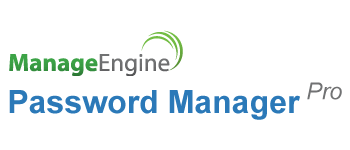Description

Password Manager Pro

WhiteSource
Comprehensive Overview: Password Manager Pro vs WhiteSource
Password Manager Pro
a) Primary Functions and Target Markets
Primary Functions: Password Manager Pro is an enterprise-grade password management solution. Its core functions include:
- Centralized vault to securely store and manage various types of privileged accounts.
- Password policies and workflows to enforce strong password usage.
- Automated password resets and updates for a variety of systems and applications.
- Session monitoring and recording for scrutinizing privileged account activities.
- Role-based access controls and auditing capabilities for compliance requirements.
Target Markets:
- Large enterprises and organizations with a focus on IT and security operations.
- Industries that require strong compliance and governance frameworks, like finance, healthcare, and government sectors.
b) Market Share and User Base
Password Manager Pro, developed by ManageEngine, part of Zoho Corporation, is widely used across enterprises but specific market share figures are usually not disclosed. It competes in the broader security software market, particularly in categories like Privileged Access Management (PAM).
c) Key Differentiating Factors
- Strong integration with various IT systems, applications, and cloud services.
- Emphasis on comprehensive privileged session management.
- The backing of the larger ManageEngine suite offers streamlined support for broader IT management needs.
WhiteSource (now Mend)
a) Primary Functions and Target Markets
Primary Functions: WhiteSource, now known as Mend, focuses on open-source security and license management. Its main features include:
- Automated scanning of open-source dependencies for security vulnerabilities.
- Identification and alerting about open-source license compliance issues.
- Continuous monitoring for newly discovered vulnerabilities in real-time.
- Detailed reporting and analytics for software supply chain insights.
Target Markets:
- Software development teams and enterprises that heavily rely on open-source software.
- Sectors needing robust software security measures, such as technology, e-commerce, and embedded systems industries.
b) Market Share and User Base
WhiteSource, being a prominent player in the Software Composition Analysis (SCA) market, has a significant user base among development and DevOps teams. Exact market share is fluid due to the rapidly evolving open-source security landscape.
c) Key Differentiating Factors
- Specializes exclusively in open-source security and compliance.
- Strong focus on real-time vulnerability detection and alerts.
- Integrates well with CI/CD pipelines to automate security checks within development workflows.
REVE Secure
a) Primary Functions and Target Markets
Primary Functions: REVE Secure is a cybersecurity solution with a focus on:
- Endpoint protection to guard against malware, ransomware, and other threats.
- Email security to prevent phishing and spam attacks.
- Network security services such as firewalls and VPNs.
Target Markets:
- Small to medium-sized businesses (SMBs) seeking affordable yet comprehensive cybersecurity services.
- Specific sectors such as telecom and financial services, where robust network security is vital.
b) Market Share and User Base
REVE Secure targets a different segment compared to the other two products discussed, focusing primarily on SMBs and emerging markets. Information on market share and user base is typically less transparent given its SMB focus.
c) Key Differentiating Factors
- Offers a holistic cybersecurity package that covers various aspects of IT security.
- Tailored solutions for SMBs with an emphasis on affordability and ease of use.
- Strong presence in specific regional markets, especially in Asia and emerging economies.
Overall Comparison
-
Primary Functionality: Password Manager Pro excels in password and privileged access management; WhiteSource specializes in open-source security management; REVE Secure provides an all-round cybersecurity platform emphasizing endpoint and network protection.
-
Target Markets: Password Manager Pro targets large enterprises, WhiteSource focuses on development teams and software companies, while REVE Secure addresses cybersecurity needs of SMBs.
-
Differentiators: Password Manager Pro and WhiteSource offer specialized services in password and open-source security, respectively. REVE Secure differentiates by offering comprehensive security tailored to smaller businesses with cost-effective solutions.
Each product serves distinct needs within the cybersecurity and IT management spectrum, catering to different market segments and offering unique functionalities based on user requirements.
Contact Info

Year founded :
Not Available
Not Available
Not Available
Not Available
Not Available

Year founded :
Not Available
Not Available
Not Available
Not Available
Not Available
Feature Similarity Breakdown: Password Manager Pro, WhiteSource
To provide a feature similarity breakdown for Password Manager Pro, WhiteSource, and REVE Secure, we need to consider the core functionalities of each product. These products come from different domains: Password Manager Pro is primarily a password management tool, WhiteSource is a software composition analysis tool, and REVE Secure is a cybersecurity solution. Given their distinct primary purposes, the following outlines their feature similarities and differences:
a) Core Features in Common
Despite their different areas, there could be some overlapped capabilities, primarily around security and user management:
-
Security & Compliance:
- All three solutions emphasize security, though in different contexts. Password Manager Pro focuses on securing passwords, WhiteSource deals with open-source security vulnerabilities, and REVE Secure offers network and endpoint security.
- Encryption standards are commonly involved in ensuring security across these platforms.
-
User Access Control:
- Management of user permissions and access control is a shared feature, supporting role-based access to ensure that users have only the necessary permissions.
-
Reporting and Analytics:
- Each product likely includes some form of reporting or analytics capabilities. Password Manager Pro might report on password strength and usage, WhiteSource on open-source library vulnerabilities, and REVE Secure on threat analysis.
-
Integration Capabilities:
- They likely support integrations with other tools and platforms, though this will differ in terms of what kinds of systems they integrate with given their specializations.
b) User Interface Comparison
-
Password Manager Pro:
- Typically offers a dashboard that allows users to manage passwords, view reports, and configure settings with a focus on simplicity and efficiency to make frequent password usage manageable.
-
WhiteSource:
- UI is usually oriented around project management, dependency tracking, and vulnerability dashboards, allowing developers to quickly assess risks in their software projects.
-
REVE Secure:
- The interface may focus on real-time monitoring and alert systems, providing admins with threat dashboards and logs to manage and respond to security incidents promptly.
c) Unique Features
-
Password Manager Pro:
- Password Vaulting: Securely stores and manages credentials across a wide range of platforms.
- Auditing and Compliance Reporting: Specifically tailored for ensuring compliance with password policies and regulations.
-
WhiteSource:
- Open Source Vulnerability Management: Monitors and provides alerts for known vulnerabilities in open-source components.
- License Risk Analysis: Helps in identifying potential legal risks associated with the use of open-source licenses.
-
REVE Secure:
- Endpoint Security: Provides comprehensive protection for endpoints, including antivirus, firewall, and anti-malware.
- Network Behavior Analysis: Offers detailed insights into network traffic to detect and respond to sophisticated threats.
Each product serves distinct user needs, which is reflected in their unique features and user interfaces, focusing on password management, open-source security, and cybersecurity, respectively.
Features

Automated Password Handling
User Access Control
Audit and Reporting
Secure Password Storage

Open Source Management
Security and Risk Management
Reporting and Analytics
Development Support
Best Fit Use Cases: Password Manager Pro, WhiteSource
When considering Password Manager Pro, WhiteSource, and REVE Secure, it's important to understand how each serves different needs and scenarios. Below is an exploration of the ideal use cases for each:
Password Manager Pro
a) Best Fit for Businesses or Projects:
- Enterprises and Large Organizations: Password Manager Pro is designed to manage passwords within large teams and departments, making it ideal for enterprises with complex IT infrastructures and numerous privileged accounts.
- Industries with Strict Compliance Requirements: Organizations in banking, healthcare, or legal sectors benefit because the tool helps maintain compliance with standards like HIPAA, PCI DSS, and others by enforcing strong password policies.
- Projects Requiring Stringent Access Controls: Projects that require enhanced security protocols and tight access control measures would find Password Manager Pro beneficial given its capability to streamline privileged access management across various platforms.
d) Industry Verticals or Company Sizes:
- Best suited for medium to large companies across industries, especially those with high security and compliance needs such as finance, healthcare, and government sectors.
WhiteSource
b) Scenarios for Preferred Use:
- Software Development Organizations: WhiteSource is an optimal choice for companies with significant open-source software components in their development workflow, offering automated open-source security and license compliance management.
- DevOps and CI/CD Environments: It's effective in continuous integration/continuous deployment (CI/CD) scenarios where automated vulnerability and compliance checks within the software supply chain are crucial.
- Multi-Team Development Projects: Large-scale projects with multiple teams can leverage WhiteSource to ensure open-source libraries meet company standards and are free from known vulnerabilities, avoiding technical debt and security risks.
d) Industry Verticals or Company Sizes:
- Primarily aimed at software development companies of various sizes, particularly those in tech industries, as well as any innovation-focused organization using open-source components.
REVE Secure
c) When to Consider REVE Secure:
- Small to Medium-Sized Enterprises (SMEs): It caters to smaller businesses needing effective, yet straightforward and budget-friendly security solutions against cyber threats.
- Telecom and ISP Providers: As REVE Secure offers services like mobile security and parental control, it is well tailored for businesses in telecom sectors needing to extend security services to end-users.
- Geographically Diverse Teams: Organizations with employees working in various locations where mobile and network security form a crucial part of operations may find REVE Secure fitting, especially in emerging markets.
d) Industry Verticals or Company Sizes:
- Well-suited for SMEs in general business services and telecom sectors. It is particularly effective for industries seeking essential cybersecurity without overly complex or expensive solutions.
In summary, these tools cater to different business environments and needs: Password Manager Pro for enterprise-level access management, WhiteSource for open-source management in development, and REVE Secure for straightforward cybersecurity in smaller or telecom-focused businesses. Each serves various industry verticals from finance to development, supporting different sizes from SMEs to large enterprises.
Pricing

Pricing Not Available

Pricing Not Available
Metrics History
Metrics History
Comparing undefined across companies
Conclusion & Final Verdict: Password Manager Pro vs WhiteSource
To provide a comprehensive conclusion and final verdict for Password Manager Pro, WhiteSource, and REVE Secure, it is essential to evaluate each product based on overall value, pros and cons, and recommendations for users.
Conclusion and Final Verdict:
a) Best Overall Value:
Considering the different functionalities and scopes of these products, determining the best overall value depends on the specific needs of the user:
-
Password Manager Pro: Best suited for organizations primarily focused on secure password management and privileged account governance.
-
WhiteSource: Ideal for businesses that prioritize open-source security and license management alongside code security.
-
REVE Secure: Best for companies that need endpoint and network security solutions.
Ultimately, the product offering the best overall value largely depends on the intended use case. If password security is paramount, Password Manager Pro is highly suitable. For software composition analysis and open-source security, WhiteSource is the winner. For comprehensive endpoint security, REVE Secure takes the lead.
b) Pros and Cons:
-
Password Manager Pro:
- Pros:
- Robust password management capabilities.
- Strong access controls and auditing features.
- Offers privileged access management.
- Cons:
- Limited to password and privileged access management without additional cybersecurity features.
- Can be complex for small businesses without a dedicated IT team.
- Pros:
-
WhiteSource:
- Pros:
- Excellent at managing open-source components and vulnerabilities.
- Comprehensive code security features.
- Keeps track of licensing compliance.
- Cons:
- May be overkill for organizations that do not heavily rely on open-source software.
- Can require significant configuration and integration efforts.
- Pros:
-
REVE Secure:
- Pros:
- Wide range of security features including endpoint protection and network security.
- User-friendly interface.
- Suitable for businesses looking for more than just software security.
- Cons:
- Might not specialize sufficiently in password or software composition aspects.
- Could involve additional costs for features beyond core endpoint protection.
- Pros:
c) Recommendations:
-
For Users Primarily Concerned with Password Management:
- Recommendation: Choose Password Manager Pro if password security and privileged access management are a top priority.
- Consideration: Assess the scale of password-related needs, especially if an enterprise manages numerous accounts and seeks detailed auditing capabilities.
-
For Users Focused on Open-Source Security and Compliance:
- Recommendation: Opt for WhiteSource when the organization has substantial dependency on open-source software and requires thorough vulnerability management.
- Consideration: Ensure compatibility with existing DevOps tools and weigh the importance of real-time vulnerability alerts.
-
For Users Needing Broad Security Coverage:
- Recommendation: Select REVE Secure for comprehensive network and endpoint security.
- Consideration: Evaluate the breadth of features and ensure they align with the organizational security strategy, possibly integrating it with other security tools if needed.
In summary, the optimal choice is contingent on the organization's specific security goals and infrastructure requirements. Assessing the scope and depth of each product’s capabilities can lead to an informed decision that best aligns with the company's strategic security objectives.
Add to compare



